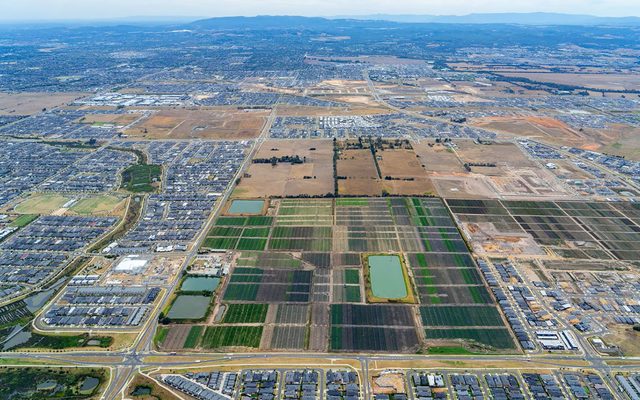This article is from the Australian Property Journal archive
DWELLING approvals across the country saw a major uptick over May, after a grim April, with new loan commitments also looking up for the month.
According to the latest ABS Building Approval release, national total dwelling approvals were up 20.6% to 15,032 in May, after a very weak April.
Upwards revisions were also made to data from the earlier months of the 2022-23 financial year, with the addition of 1,708 dwellings.
Private sector house approvals were up 0.9% to 8,135 dwellings, after a 3.0% decline over April.
With private sector dwellings excluding houses approvals up 59.4% in May, following a 13.2% fall in April.
By state, total dwelling approvals were up by 52.9% in New South Wales, 41.1% in Tasmania, 15% in Victoria and 0.9% in Queensland (0.9%).
While Western Australia and South Australia both fell over May, by 11.1% and 4.8% respectively.
With Victoria alone recording an increase in private sector house for the month, at 7.3%.
While South Australia fell by 7.2%, Western Australia by 4.5% and NSW and Queensland by 1.8%.
National private attached dwellings also rebounded, recording a 59.4% increase for the month to 6,722, reflecting the strongest result since December 2022.
“The underlying demand for housing is receiving a boost from record migration, proving supportive to the established home market, evident in strong growth in rents and a turnaround in property prices,” noted Maree Kilroy, senior economist for Oxford Economics Australia.
“However, the relay of this to new dwellings will take a few years to play out. Greenfield land and off-the-plan indicators remain negative, with buyer confidence suppressed by build cost escalation, delays, home builder administrations, and rising borrowing costs. It’s not until late 2024 that we anticipate this market pressure will guide dwelling approvals back to growth.”
Meanwhile, the value of total building approved rose 11.1% to $14.4 billion in May, following a 1.7% rise in April.
With the value of total residential building approved up 15.2% to $7.7 billion, based on a 17.1% increase in new residential building to $6.69 billion and a 4.3% rise in alterations and additions to $1.04 billion.
While the value of non-residential building increased 6.6% to $6.7 billion., following a 10.0% rise in April.
The ABS also released its latest Lending Indicators figures, showing new loan commitments were up 4.8% for housing over the month to $24.86, 4.3% for personal fixed term loans $2.26 billion and 8.1% for business purchase of property to $5.92 billion.
While new loan commitments for business construction—which like the business purchase of property category is typically volatile—fell 19.4% to $2.66 billion.
The increase in housing new borrower-accepted loan commitments, reflects an increase for owner occupiers of 4.0% to $16.37 billion and 6.2% to $8.50 billion for investor loans.
“Consistent with the return of house price growth, loans for established dwellings rose 4.2% in May, however some signs of softening momentum in property prices have emerged over recent weeks with the pace of price growth slowing in June and auction clearance rates taking a step back,” added Kilroy.
“We are wary of price growth holding through the new financial year.”
For owner occupiers, new loan commitments for the construction of dwellings was up 4.1% to $1.54 billion, with the purchase of new dwellings up 4.7% to $0.96 billion and the purchase of existing dwellings up 4.2% to $12.76 billion.
While first home buyer commitments were up 5.5% to $4.16 billion.
“Some demand supports in the first half of 2023 are expected to fade. Simultaneously, the monetary tightening cycle isn’t over yet. An additional 50 basis point lift in the cash rate target to a peak of 4.6% is forecast by September,” said Kilroy.
“This is on top of the impact of previous rate hikes yet to fully play through for existing borrowers. We maintain there is still the potential for a material lift in pressured sales given the wave of fixed-rate mortgages soon to roll over.”
By state, the value of new loan commitments was up in NSW by 9.9%, Victoria by 5.1%, WA by 4.4%, Queensland by 1.9%, Tasmania by 9.6%, SA by 0.8%, NT by 7.2% and the ACT by 0.3%.




